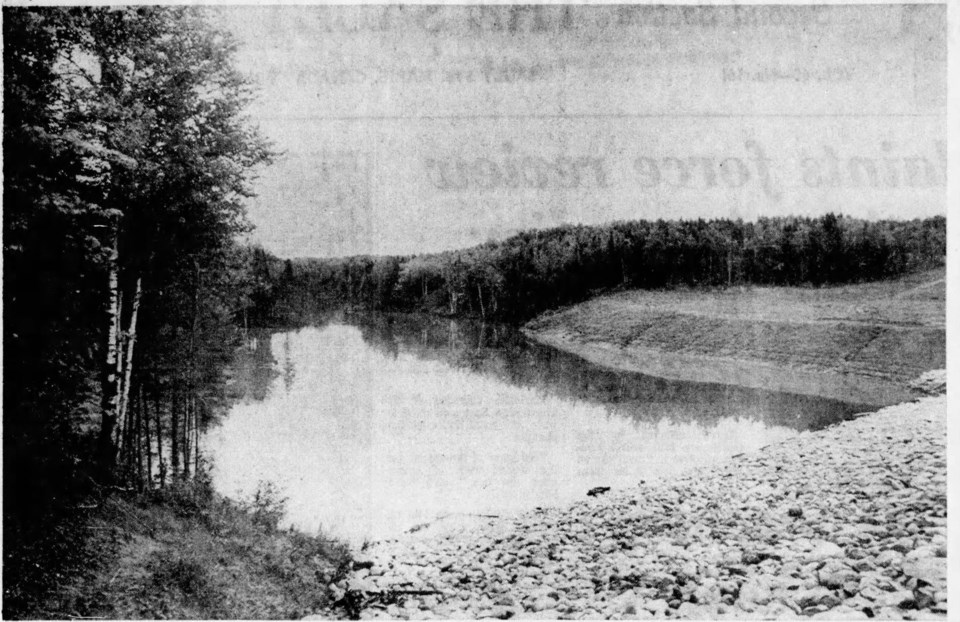From the archives of the Sault Ste. Marie Public Library:
Living in Northern Ontario, we have the opportunity to build a strong connection to nature, whether it be by planting an aesthetically pleasing garden in an urban setting or an exploration of the many hiking or mountain bike trails in the area in which we live. The benefits that the flora, urban or otherwise, provide us are incalculable.
However, on Nov. 27, 2009, in a Barry Lyons column, he attempts to describe a few of the benefits of trees in an urban setting. Lyons states
“Trees help moderate temperatures and energy costs by reducing temperatures in summer via shading and evaporation and reducing heat loss in winter by blocking cooling winds” (Sault Star, 11/2009, p. 5).
He continues with a description of photosynthesis, a process which “removes particulate and gaseous pollutants from the air [to produce oxygen]” and “remove and store carbon from the atmosphere, reducing greenhouse gases that are responsible in part to climate change” (Sault Star, 11/09, p.5).
Lyons also mentions another benefit that trees provide for us, especially those communities in which industry plays a part in its development. He states that ‘trees absorb noise’ (p.5), which was what a manufacturing plant planned to utilize in July of 1967.
When the manufacturing plant was being developed, residents of the area affected formed an association to try to combat the noise pollution produced by the machinery involved. To help come to a resolution, the company brought in engineers from Toronto to gain insight on how to address the situation, but said “it is often easy to lower the sound a certain amount, but it becomes almost impossible to bring the noise level down after a certain point has been reached” (Sault Star, 07/1967, p.21). Despite this, the company made a plan to dampen the noise by constructing ‘structural forms’ to use inside the facility and that “more trees would be planted in a line facing West Street” (p.21).
Trees have proven themselves as a valuable resource with the examples listed previously, and have cemented their importance for us as residents here in our community. What about the three hundred trees planted by the former Bawating Vocational School in the June of 1968, to make Fort Creek Dam “a perpetual park area” (Sault Star, 06/1968, p.13)? Perhaps, to provide food resources, as the “five thousand five hundred apple trees…set out by the St. Joe Island Fruit and Land Co. on their property near Marksville [in 1913]” (Sault Star, 02/1913) did. But what if one of the most valuable commodities that they provide is a glimpse into what life could have been like in years past?
Do you remember the time when a two-hundred twenty-seven-year-old Pointe aux Pins resident told stories of our past?
When you take time to reflect on lessons you were taught in primary school, one lesson you may remember is the study of the cross-sections of trees. It may have been rudimentary lessons that told us that the rings of the tree let us know its age.
This leads us to Elmer Huckson, “an Algoma Timber Cruiser” (Sault Star, 1938, p.12), who conducted a study of two cross-sections of trees, one of which a pine tree from Pointe aux Pins in the 1930s. Mr. Huckson’s study showed that the Pointe aux Pins ‘resident’ lived through ten forest fires. By studying the rings, he noticed that “following each burn, gum oozed from the scarred trunks, then the tree started to grow again, so that as the years passed, a perfect record of Algoma’s forest fires were kept by the trees as they grew” (Sault Star, 06/1938, p. 12). The other cross-section “from the Mississauga area showed a large roughly concave section, [which was] the result of the tree seeking to heal the scarred burned area by throwing protective, new wood, around it” (Sault Star, 06/1938, p. 12). Both cross-sections show the resilience of trees and their ability to adapt to the changes in the environment if we take care of the area where they reside.
Through his study, Mr. Huckson was able to deduce that the Pointe aux Pins pine tree,
“saw the building of the locks at the Sault, the establishment of the first sulphite mill, the establishment of the steel plant, heard the hills echo to the sounds of the first train coming to the Sault, and grew in security as the country developed” (Sault Star, 06/02/1938, p. 12).
In addition to these historic events, this ‘resident’ of Pointe aux Pins, lived through tensions between French settlers and British settlers, tensions between the British and those from the United States, saw bootleggers and moonshiners, amongst other stories that reside within our history. This leaves us to wonder what the next line of ‘tree cruisers’ will find in the rings of the trees that surround us now.
Each week, the Sault Ste. Marie Public Library and its Archives provide SooToday readers with a glimpse of the city’s past.
Find out more of what the Public Library has to offer at www.ssmpl.ca and look for more "Remember This?" columns here.
